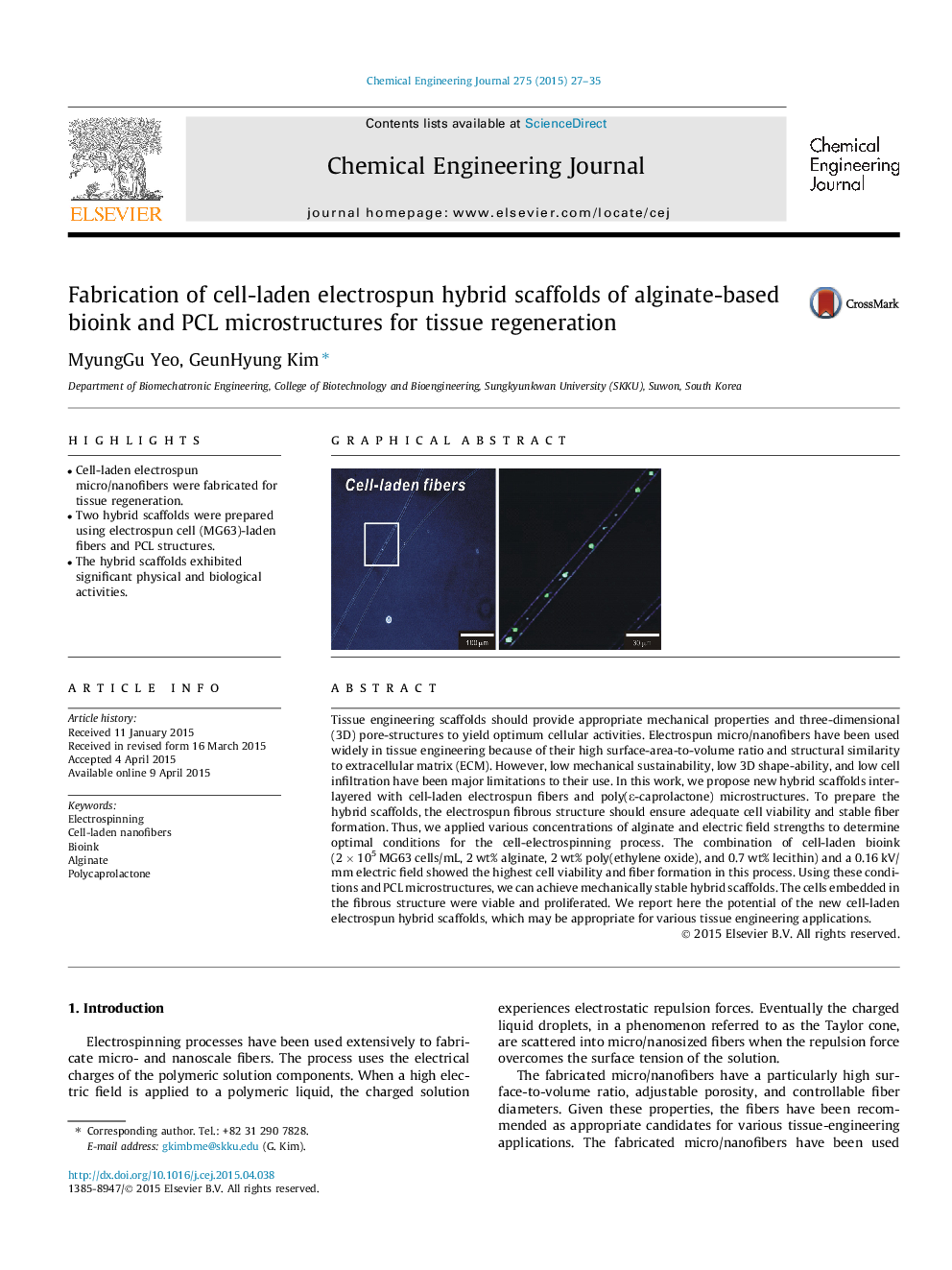| Article ID | Journal | Published Year | Pages | File Type |
|---|---|---|---|---|
| 146292 | Chemical Engineering Journal | 2015 | 9 Pages |
•Cell-laden electrospun micro/nanofibers were fabricated for tissue regeneration.•Two hybrid scaffolds were prepared using electrospun cell (MG63)-laden fibers and PCL structures.•The hybrid scaffolds exhibited significant physical and biological activities.
Tissue engineering scaffolds should provide appropriate mechanical properties and three-dimensional (3D) pore-structures to yield optimum cellular activities. Electrospun micro/nanofibers have been used widely in tissue engineering because of their high surface-area-to-volume ratio and structural similarity to extracellular matrix (ECM). However, low mechanical sustainability, low 3D shape-ability, and low cell infiltration have been major limitations to their use. In this work, we propose new hybrid scaffolds interlayered with cell-laden electrospun fibers and poly(ε-caprolactone) microstructures. To prepare the hybrid scaffolds, the electrospun fibrous structure should ensure adequate cell viability and stable fiber formation. Thus, we applied various concentrations of alginate and electric field strengths to determine optimal conditions for the cell-electrospinning process. The combination of cell-laden bioink (2 × 105 MG63 cells/mL, 2 wt% alginate, 2 wt% poly(ethylene oxide), and 0.7 wt% lecithin) and a 0.16 kV/mm electric field showed the highest cell viability and fiber formation in this process. Using these conditions and PCL microstructures, we can achieve mechanically stable hybrid scaffolds. The cells embedded in the fibrous structure were viable and proliferated. We report here the potential of the new cell-laden electrospun hybrid scaffolds, which may be appropriate for various tissue engineering applications.
Graphical abstractFigure optionsDownload full-size imageDownload as PowerPoint slide
